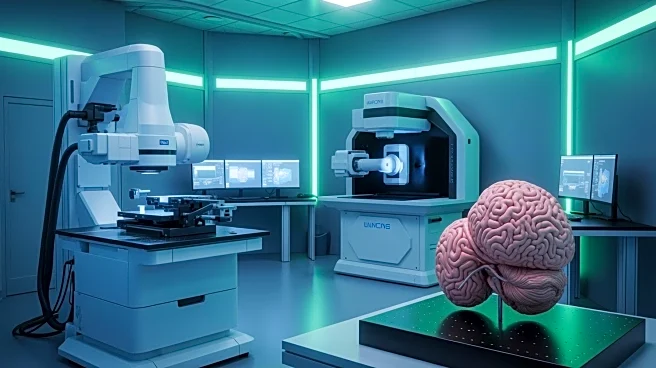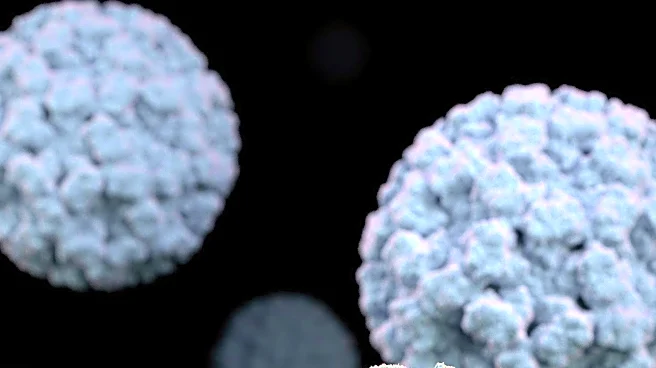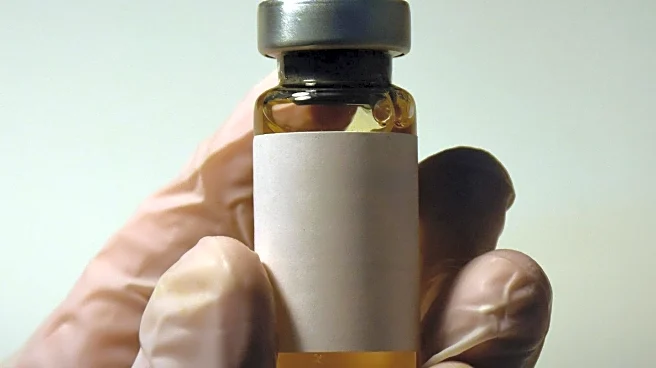What's Happening?
Recent advancements in spatial biology techniques have been pivotal in understanding and potentially preventing glioblastoma recurrence. Researchers have employed spatial profiling methods, such as spatial transcriptomics
and intravital microscopy, to analyze the spatial organization and interactions of cells within tissues. These techniques have been applied to study the cellular and molecular dynamics in glioblastoma, a highly aggressive brain tumor. The study utilized a novel implant-mediated slow release of small molecules targeting immunosuppressive myeloid cells, which are known to contribute to tumor recurrence. The research involved the use of CANDI wafers, which release small molecules over time to modulate the tumor microenvironment and inhibit the growth of glioblastoma cells.
Why It's Important?
The application of spatial biology techniques in glioblastoma research is significant as it offers a new dimension in understanding tumor biology and treatment. Glioblastoma is notoriously difficult to treat due to its aggressive nature and tendency to recur after surgery. By targeting the immunosuppressive myeloid cells within the tumor microenvironment, researchers aim to prevent recurrence and improve patient outcomes. This approach could revolutionize the treatment of glioblastoma by providing a more targeted and effective therapy, potentially leading to longer survival rates and better quality of life for patients. The integration of spatial and molecular data provides a comprehensive view of tissue architecture and cellular interactions, which is crucial for developing personalized medicine strategies.
What's Next?
Future research will likely focus on refining these spatial biology techniques and exploring their application in other types of cancer. Clinical trials may be conducted to evaluate the efficacy and safety of the CANDI wafer technology in human patients. Additionally, researchers may investigate the potential of combining this approach with other therapies, such as immunotherapy or chemotherapy, to enhance treatment outcomes. The continued development of spatial biology methods could lead to breakthroughs in understanding and treating various complex diseases beyond cancer.
Beyond the Headlines
The ethical implications of using advanced spatial biology techniques in medical research are significant. Ensuring patient consent and data privacy will be crucial as these methods become more integrated into clinical practice. Furthermore, the long-term effects of altering the tumor microenvironment need to be thoroughly studied to prevent unintended consequences. The cultural acceptance of such innovative treatments will also play a role in their adoption and success.











